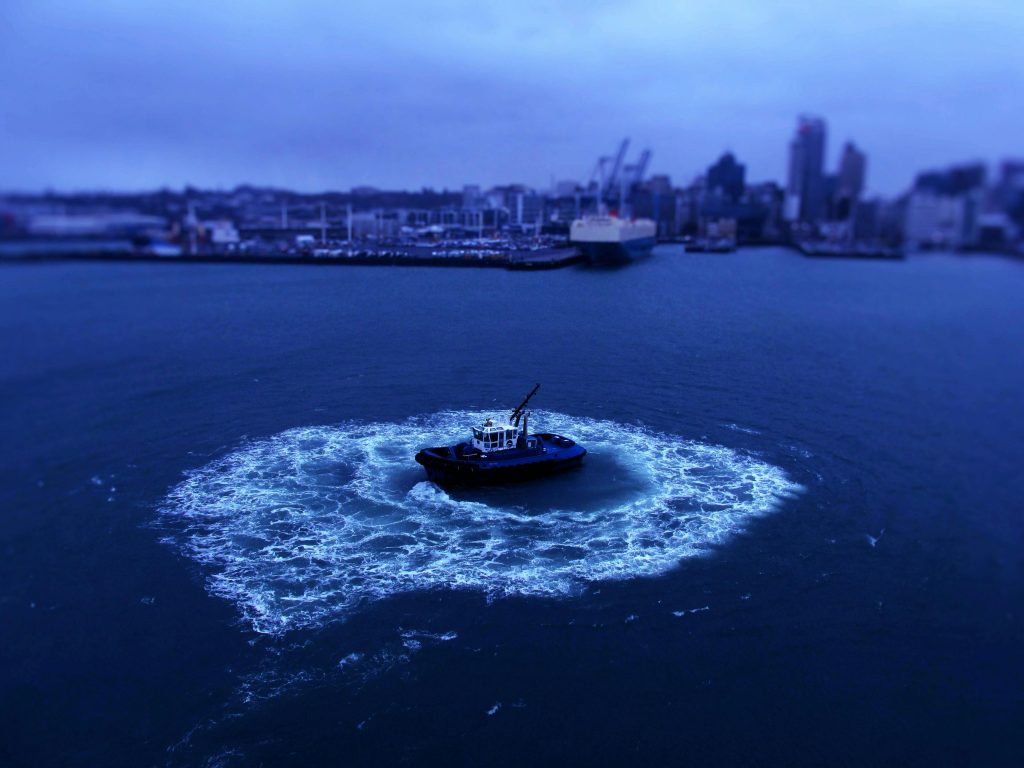Introduction:
In late 2024, Watercare’s announcement of infrastructure capacity constraints sent ripples through Auckland’s development and investment communities. Now that the initial shock has passed, we’re seeing a more nuanced picture emerge—one that reveals both challenges and opportunities for those looking to develop within affected areas.
Trip Andrews shares valuable, on-the-ground insights from recent projects, outlining how developers can still move forward with the right strategies, timing, and professional support. From understanding constraint maps to case-by-case approvals and planning pathways, this update is a must-read for any property owner or investor navigating Auckland’s current development environment.
Source: Trip Andrews – “Navigating Watercare Capacity Constraints in Auckland”:
Navigating Watercare Capacity Constraints in Auckland

Auckland’s Watercare infrastructure constraints announcement sent shockwaves through the development community at the end of 2024. Now the dust has settled from the initial bombshell, and having had the chance to work on several projects within the constraints areas, we can now provide some insights and updates from the front line.
When Watercare released its infrastructure capacity constraints map in November 2024, it confirmed what most of us in the industry had suspected for a while. Initially, there were only whispers about capacity constraints, but it wasn’t long before that noise grew louder when Watercare stopped supporting applications in specific areas across Auckland. Watercare’s approach created uncertainty, so when the constraints were formally announced, we at least had transparency.
Now that several months have passed and having been involved in projects that are within the capacity constraints areas, it has become clear that there’s a more nuanced reality—while capacity constraints create challenges, they do not always represent insurmountable barriers.
The Great Infrastructure Disconnect
While not entirely doom and gloom, let’s be clear about what we’ve actually witnessed: a remarkable disconnect between Auckland Council’s rezoning for intensification and Watercare’s infrastructure capabilities (or should that be inabilities?). It is a classic case of the left hand not knowing what the right hand was doing—Auckland Council rezoned for intensification while being oblivious to the fact that Watercare couldn’t support these development aspirations.
Think about that for a moment. Auckland Council enabled intensification through the Auckland Unitary Plan, while oblivious to the fact that Watercare couldn’t support it.
What’s particularly concerning is that these constraints didn’t suddenly materialise overnight. They represent years of underinvestment in critical infrastructure and a failure to adequately plan for the growth that Auckland Council’s own policies have encouraged. This disconnect between zoning for intensification and providing the necessary infrastructure to support it has created a situation where property owners and developers are left bearing the consequences.
Understanding Watercare Capacity Constraints in Auckland
If you missed the announcement or are still unsure about what these capacity issues actually mean, here’s a recap.
Watercare’s infrastructure capacity constraints refer to limitations in the existing water and wastewater network that affect its ability to service new developments. These constraints have emerged primarily due to Auckland’s unprecedented population growth and the intensification enabled by the Auckland Unitary Plan implemented in 2016.
Watercare’s infrastructure capacity map categorises areas based on their infrastructure limitations:
- Areas with sufficient network capacity
- Areas with water constraints
- Areas with wastewater constraints
- Areas experiencing both water and wastewater constraints
Watercare has prepared a high-level document showing the constraints areas that can be accessed here. The document also includes a table that sets out when solutions are expected and splits the areas into the following categories:
- Areas with limited capacity at present
- Areas with no capacity at present (subject to some capacity in several areas where consents have been approved)
- Areas with no capacity long-term
Some of these areas face infrastructure constraints with solutions not expected until between 2035 and 2045—creating significant uncertainty for property owners with development aspirations.
You can also use the Watercare GIS maps to search properties if the above document is not clear. The maps are located here.
Further information and updates on solutions from Watercare is available here for the following areas:
- Hibiscus Coast
- Warkworth
- Wellsford and Te Hana
- Ōtara
- Lower North Shore
Any future updates on those areas or other areas will be available from that page, so we recommend saving it for future use.
Watercare is actively addressing these capacity issues through significant infrastructure investments. This includes over $1.2 billion allocated for new and upgraded water and wastewater infrastructure this financial year, as part of a broader $13.7 billion investment planned for the next decade.
But what does it all mean for us right now?
Beyond First Impressions: Development Possibilities Within Capacity Constraints
Despite these constraints, it is now clear that network constraints do not automatically preclude new development opportunities. This is the nuance that matters most to property owners and developers.
Watercare has implemented a capacity application process that evaluates developments on a case-by-case basis, considering:
- Geographic location
- Projected service demand
- Development scale
- Implementation timeline
This means that within some constraints areas, developments could still proceed because they have limited capacity, not no capacity. This distinction makes all the difference for property owners and developers navigating Auckland’s complex development landscape.
The Beach Haven Case Study: Proceeding to Resource Consent
A recent project in Beach Haven illustrates how these constraints can be successfully navigated with the right approach. Let’s examine how this played out in practice:
A young family approached us with plans to develop their Beach Haven property, completely unaware it was in a constraints area. When we reviewed the Watercare constraints map, we discovered infrastructure solutions for this area weren’t expected until 2035-2040.
The family owned a modest dwelling at the front of their property with valuable development space at the back. Their vision was to build a new home at the rear for their growing family while keeping the existing front dwelling as an investment—a common strategy for many Auckland homeowners seeking to maximise their property’s potential.
By conducting a site-specific assessment, and preparing the application of behalf of the family, we were able obtain confirmation from Watercare that the development would have minimal impact on the existing infrastructure. With this evidence, the project is now proceeding to the resource consent stage.
Watercare did include their standard caveat that capacity is available currently but may change in the future—highlighting why prompt action is essential in these areas. This case demonstrates that while infrastructure constraints present challenges, they aren’t necessarily roadblocks when approached with proper assessment and planning.
Navigating the Watercare Capacity Constraints Process
Successful navigation through Watercare’s capacity constraints requires a strategic approach. Here’s how we recommend to navigate this process effectively:
Professional Assessment and Expertise
Early engagement with qualified planners and civil engineers is essential. They will conduct a property-specific analysis using Watercare’s GIS platform and online tool. This assessment provides clarity on:
- The specific type of capacity constraint affecting your property
- The expected timeframe for infrastructure solutions
- The solution type being implemented
For resource consent applications, you’ll need to include either a printout from Watercare’s Online Tool verifying connection availability or written confirmation from Watercare that service connections will be provided. Without this documentation, your application may be deemed incomplete under section 88(3) of the RMA.
Experienced planners and engineers also provide crucial expertise by:
- Liaising directly with Watercare on your behalf
- Preparing detailed capacity assessments
- Identifying solutions that satisfy requirements
- Navigating the three potential connection scenarios:
- Connections immediately available
- Connections available within 5-year consent period
- Connections not available within 5-year period
Planning Pathways and Timing Strategies
Several planning pathways remain available in constrained areas:
- Permitted activity status for up to three dwellings in certain residential zones, including Mixed Housing Suburban and Urban zones with capacity constraints addressed at the building consent stage
- Potential conditional consents that align development timing with infrastructure upgrades
- Specific provisions for subdivisions proceeding around existing development or approved land use consents
It is important to clarify that water and wastewater capacity constraints identified in November 2024 have no bearing on the ability to use the Medium Density Residential Standards (MDRS). If your site is not subject to any qualifying matters under Plan Change 78, MDRS can still be applied to your development, with capacity constraints addressed at the building consent stage.
Timing considerations are also essential when dealing with constraints:
- Development may need phasing to align with infrastructure upgrades
- Starting with smaller-scale development might avoid triggering concerns
- Securing approvals now can establish development rights
For building consent applications, you’ll need either confirmation of available connections or demonstration of compliance through alternative means.
For detailed information about the capacity application process, visit watercare.co.nz/builders-and-developers/consultation.
Watercare’s Position Reversal on Existing Resource Consents
An important clarification that emerged after the initial announcement is Watercare’s commitment to honouring existing resource consents. This position reversal was critical, as their previous stance put many projects in jeopardy.
We are currently working on two larger developments—one in Otara and another in Glen Eden—that obtained resource consents for a total of 39 homes well before the capacity constraints were announced. With Watercare honouring resource consent capacity, these developers can now proceed with confidence.
This reversal represents a rare moment of common sense. The fact that Watercare initially considered invalidating existing consents reveals a concerning disconnect between regulatory bodies and commercial reality. Developers make substantial financial commitments based on the regulatory environment at the time of their application—changing the rules after approvals have been granted undermines confidence in the entire development system.
This means that if you already have a resource consent in Auckland, Watercare have confirmed that they will not decline an application to connect to their networks based on the bulk capacity of their infrastructure.
Watercare’s position on developments in Auckland that have building consent is also positive. They have confirmed that if you already have building consent, you are not impacted by the constraints.
Key Strategies for Auckland Property Owners and Developers
Based on our experience navigating these constraints, we recommend the following strategies:
- Capacity constraints don’t mean development is impossible. Developments can still proceed with the right approach and expert guidance.
- Site-specific assessments are essential. Don’t rely solely on the regional constraints map—get a detailed analysis of your specific property.
- Early engagement with specialists pays dividends. Working with experienced planners and civil engineers can identify viable pathways forward.
- Existing consents are being honoured. If you already have resource consent or building consent, Watercare will still allow connection.
Moving Forward with Confidence in Auckland Development
While Watercare’s capacity constraints present real challenges for Auckland’s development community, they are not insurmountable barriers in all locations. With careful planning, expert guidance, and strategic timing, developments can still proceed even in constrained areas.
The key is conducting detailed site-specific assessments, supported by quality engineering analysis, and working with qualified civil engineers and planners who understand the constraints, the available pathways forward and what areas need solutions implemented before development can recommence.
By taking this approach, Watercare’s capacity constraints can be navigated and potential roadblocks can be turned into manageable hurdles.






 End of Financial Year Special: Save $1,200+ on Property Management!
End of Financial Year Special: Save $1,200+ on Property Management!